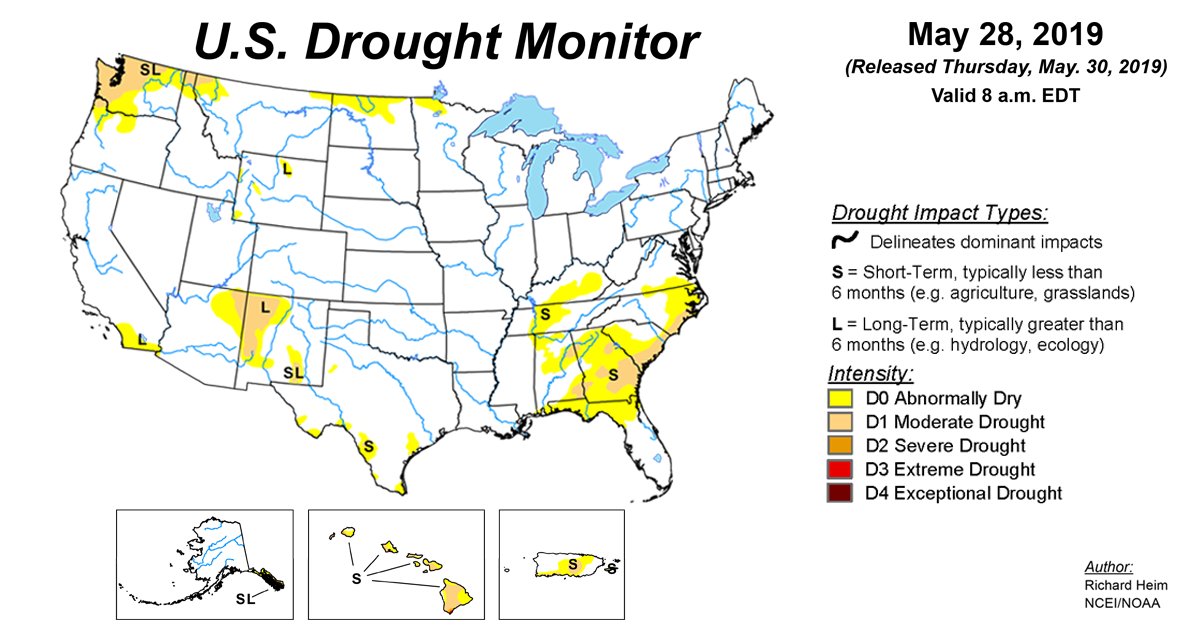
According to the May 28, 2019, U.S. Drought Monitor, moderate to extreme drought covers 3.3% of the United States, an increase from last week’s 2.7%. The worst drought categories (extreme to exceptional drought) remain the same as last week: 0.14%.
A strong high-pressure ridge was anchored over the Southeast while an upper-level trough dominated the West. This pattern set up a southwesterly flow across the central part of the country, which funneled moist and unstable air from the Gulf of Mexico into the Plains. Pacific weather systems moving in the jet stream flow plunged into the western trough, bringing precipitation and cooler-than-normal temperatures to much of the country from the Rockies westward. The weather systems intensified as they moved into the Plains, triggering another week of severe weather and heavy flooding rains.
Weekly precipitation was wetter than normal across much of the Southwest and from much of the Great Plains to the Great Lakes. Precipitation occurred from the central Appalachians to New England, but these amounts were mostly below normal. The week ended up drier than normal across western Washington, northern Idaho, northern Montana, southern Arizona, and most of New Mexico, as well as central-to-southern Texas and much of Hawaii. The subtropical high kept the Southeast drier and warmer than normal, with record high temperatures reported. As a result of this weather pattern, drought or abnormal dryness contracted in Oregon, Wyoming, and the central Plains, but expanded in the northern Rockies, Texas, the Tennessee Valley, the Southeast, and Hawaii.
Abnormal dryness and drought are currently affecting over 41 million people across the United States—about 13.4% of the country’s population.

The full U.S. Drought Monitor weekly update is available from Drought.gov.
In addition to Drought.gov, you can find further information on the current drought as well as on this week’s Drought Monitor update at the National Drought Mitigation Center. See their recent news releases.
The most recent U.S. Drought Outlook is available from NOAA’s Climate Prediction Center and the U.S. Department of Agriculture provides information about the drought’s influence on crops and livestock.
For additional drought information, follow #DroughtMonitor on Facebook and Twitter.



